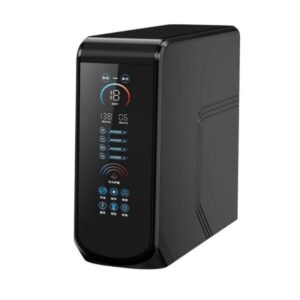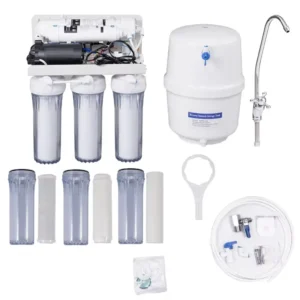Limescale Causes Purifier Leaks, Flooding Kitchens? Scary Reality
Limescale buildup in water purifiers is more than a minor annoyance—it’s a ticking time bomb that can lead to catastrophic leaks
and kitchen floods. Limescale, which is composed of calcium and magnesium deposits, forms when hard water flows through the
purifier’s components, gradually coating pipes, valves, and filter housings. Over time, this buildup restricts water flow, creating
pressure that can crack plastic parts, burst hoses, or dislodge connections.

The first signs of trouble are often subtle: a slow drip from the filter housing, reduced water pressure from the purifier’s faucet, or
strange gurgling noises as water struggles to pass through scaled pipes. Ignoring these warning signs can lead to disaster. A small
leak can quickly escalate, saturating cabinets, warping wooden floors, and damaging appliances like dishwashers or refrigerators.
In severe cases, flooding can even seep into subflooring or walls, leading to mold growth and expensive repairs that cost thousands
of dollars.
strange gurgling noises as water struggles to pass through scaled pipes. Ignoring these warning signs can lead to disaster. A small
leak can quickly escalate, saturating cabinets, warping wooden floors, and damaging appliances like dishwashers or refrigerators.
In severe cases, flooding can even seep into subflooring or walls, leading to mold growth and expensive repairs that cost thousands
of dollars.

Preventing limescale buildup is key to avoiding these risks. In areas with hard water—where mineral levels are high—descaling the
purifier every 3–6 months is essential. This process involves flushing the system with a descaling solution, typically a mixture of citric
acid and water (1 cup of citric acid per 2 liters of water works well). Simply turn off the water supply, disconnect the purifier’s output hose,
and pour the solution into the system. Let it sit for 30 minutes to dissolve the limescale, then flush thoroughly with clean water to remove any residue.
purifier every 3–6 months is essential. This process involves flushing the system with a descaling solution, typically a mixture of citric
acid and water (1 cup of citric acid per 2 liters of water works well). Simply turn off the water supply, disconnect the purifier’s output hose,
and pour the solution into the system. Let it sit for 30 minutes to dissolve the limescale, then flush thoroughly with clean water to remove any residue.
Installing a pre-filter designed to reduce water hardness can also slow limescale formation. These filters, which use ion exchange to remove
calcium and magnesium ions,the strain on the main purifier components. Regularly checking hoses and connections for signs
Water Purifier Factory, Water Purifier For Home, Water Purifier Machine,Water Purifier, Water Filter Purifier System
calcium and magnesium ions,the strain on the main purifier components. Regularly checking hoses and connections for signs
Water Purifier Factory, Water Purifier For Home, Water Purifier Machine,Water Purifier, Water Filter Purifier System
of scaling—look for white, crusty deposits—is another proactive step; replacing worn hoses before they crack can prevent leaks.
For RO systems, which are particularly susceptible to limescale due to their thin membranes, adding a scale inhibitor to the pre-filter stage
can extend membrane life and reduce pressure buildup. It’s also important to avoid letting the purifier sit unused for long periods, as stagnant
water allows minerals to settle and form scale more quickly.
can extend membrane life and reduce pressure buildup. It’s also important to avoid letting the purifier sit unused for long periods, as stagnant
water allows minerals to settle and form scale more quickly.
If you do notice a leak, act immediately: turn off the main water supply to the purifier, place a bucket under the drip, and assess the damage.
Minor leaks from loose connections can often be fixed by tightening fittings, but cracked housings or pipes will need replacement. Regular
maintenance takes just a few minutes monthly but can save you from the stress and expense of a flooded kitchen.
Limescale Causes Purifier Leaks, Flooding Kitchens? Scary Reality
Minor leaks from loose connections can often be fixed by tightening fittings, but cracked housings or pipes will need replacement. Regular
maintenance takes just a few minutes monthly but can save you from the stress and expense of a flooded kitchen.
Limescale Causes Purifier Leaks, Flooding Kitchens? Scary Reality

